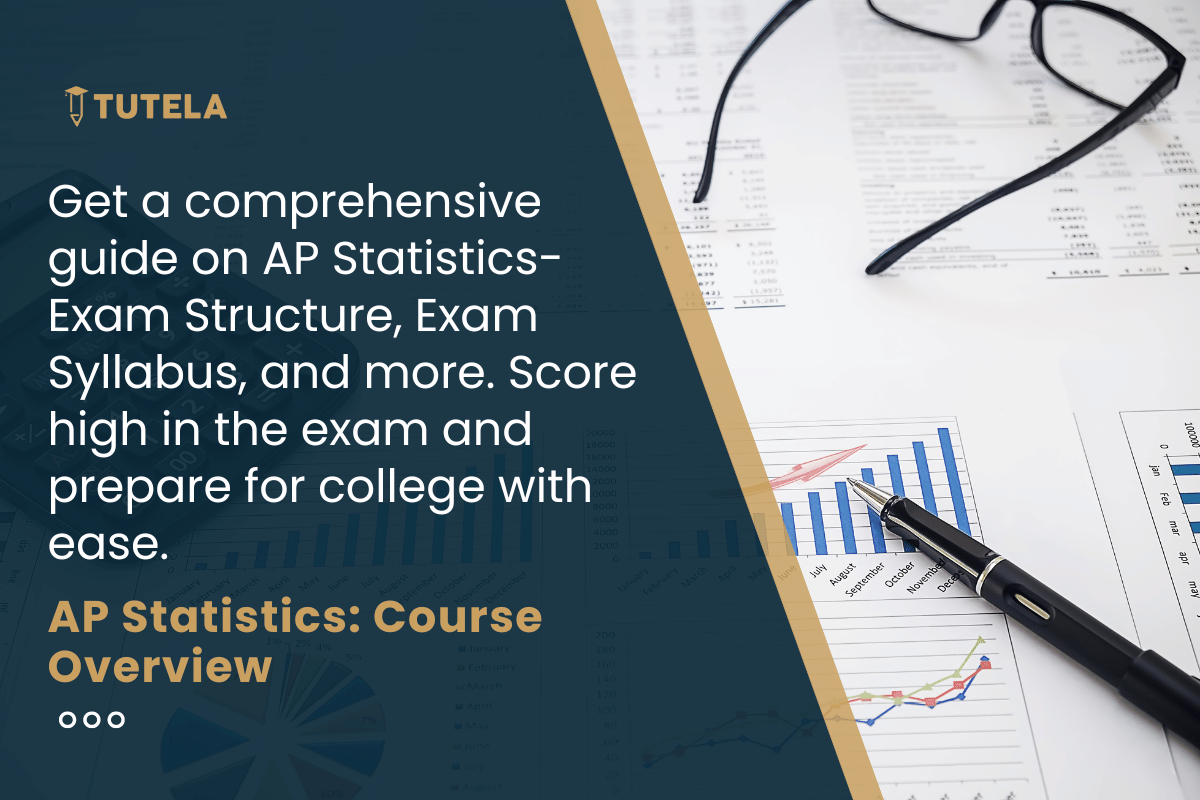
In the dynamic landscape of education, the Advanced Placement (AP) Statistics course stands as a gateway to understanding the world through a statistical lens. Tailored for high school students, this course offers a comprehensive exploration of key statistical concepts, equipping learners with the analytical tools essential for decision-making, problem-solving, and critical thinking.
The AP Statistics course is divided into several modules, each delving into fundamental aspects of statistical reasoning. Topics include data analysis, experimental design, probability, and inference. The curriculum is designed to strike a balance between theoretical understanding and practical application, ensuring that students not only grasp statistical principles but also know how to wield them effectively in real-world scenarios. The AP Statistics Exam is on 7th May 2024.
The importance of AP Statistics is stated below:
Skill Development: The AP Statistics exam focuses on developing statistical reasoning, interpretation, and communication skills. These skills are valuable not only in college but also in various professions where data analysis and interpretation are crucial.
Quantitative Literacy: In an increasingly data-driven world, the ability to understand and interpret statistics is essential. AP Statistics helps students become statistically literate citizens who can critically evaluate and make informed decisions based on data.
Rigorous Assessment: The AP Statistics exam is a comprehensive and challenging assessment that covers a wide range of statistical topics. Successfully navigating this exam demonstrates a high level of mastery in the subject.
| Unit Name | Description | Weightage in the Exam |
| Unit-1 |
In this unit, students typically learn to summarize and describe data collected from a single variable. They explore techniques such as graphical displays and numerical summaries (mean, median, standard deviation) and consider concepts like shape, center, and spread. |
15-23% |
| Unit-2 |
Building on the concepts from Unit 1, Unit 2 focuses on the relationship between two variables. Students learn to analyze bivariate data, create scatterplots, and understand correlation and regression as tools for quantifying and modeling relationships. |
5-7% |
| Unit-3 | This unit delves into the process of collecting data. Students learn about experimental design, sampling methods, and the importance of randomization to ensure unbiased and reliable results. They also explore the potential pitfalls and biases that can arise in data collection. | 12-15% |
| Unit-4 | Students in this unit delve into the fundamental principles of probability. They learn about random variables and probability distributions, both discrete and continuous. This unit lays the groundwork for understanding uncertainty and randomness in statistical analysis. | 10-20% |
| Unit-5 | Building on probability concepts, this unit introduces the idea of sampling distributions. Students explore the distribution of sample statistics and the Central Limit Theorem, which is crucial for statistical inference. | 7-12% |
| Unit-6 | Inferential statistics come into play in this unit, where students learn how to make predictions and inferences about population parameters based on sample data. The focus is on proportions in categorical data, involving confidence intervals and hypothesis tests. | 12-15% |
| Unit-7 | Continuing with inferential statistics, this unit shifts the focus to quantitative data. Students learn how to make inferences about population means using confidence intervals and hypothesis tests | 10-18% |
| Unit-8 | This unit introduces the chi-square test for independence and goodness of fit. Students apply statistical methods to analyze relationships and associations in categorical data, extending their inferential toolkit. | 2-5% |
| Unit-9 | The final unit focuses on linear regression and inference for slopes. Students learn how to model relationships between variables using regression analysis and make inferences about the slope of the regression line. | 2-5% |
The AP Statistics exam comprises two sections: a multiple-choice section lasting about 1 hour and 30 minutes with around 40 questions, and a free-response section lasting approximately 1 hour, featuring six questions that assess investigative and argumentative skills. Graphing calculators are permitted throughout the exam. Scores range from 1 to 5, with many colleges accepting scores of 3, 4, or 5 for credit or advanced placement. It's recommended to check the College Board's official resources for the latest exam details.
1. Statistics/Data Science: AP Statistics provides a strong foundation for those interested in pursuing a major or career in statistics or data science.
2. Economics: Understanding statistical methods is crucial in economic research and analysis, making AP Statistics beneficial for economics majors.
3. Psychology: Psychological research often involves statistical analysis of data, making AP Statistics relevant for psychology majors.
4. Biology/Bioinformatics: Students pursuing majors in biology or bioinformatics may find AP Statistics useful for analyzing biological data and conducting experiments.
5. Sociology: Sociological research often involves statistical techniques to analyze and interpret social patterns, making AP Statistics beneficial for sociology majors.
6. Political Science: Political scientists often use statistical methods to analyze survey data and draw conclusions, making AP Statistics valuable in this field.
7. Business/Finance: AP Statistics can be beneficial for majors in business and finance, where data analysis plays a crucial role in decision-making and market research.
8. Public Health: Understanding statistics is essential in public health for analyzing health-related data, conducting epidemiological studies, and making informed policy decisions.
9. Environmental Science: AP Statistics can be valuable for majors in environmental science, aiding in the analysis of environmental data and the interpretation of research findings.
10. Computer Science: In computer science, particularly in areas like machine learning and artificial intelligence, a strong statistical background is advantageous. AP Statistics can provide a solid foundation for understanding algorithms and data analysis techniques.
TutelaPrep’s College Navigator allows students to search for colleges based on their preferred country and course. Not only that, it also provides valuable insights into each college’s specific admission requirements for those exams. Through College Navigator, you can even connect with alumni at your chosen colleges to get a firsthand feel for campus life and academics.
We hope this article helped you with the subject knowledge. Reach out to us by filling out our assistance form if you need any help with the preparations.